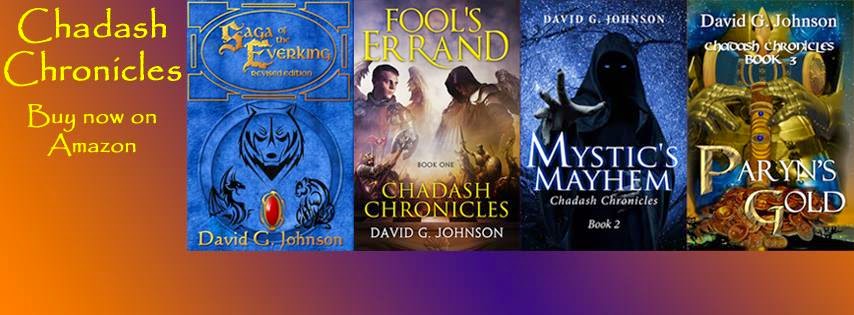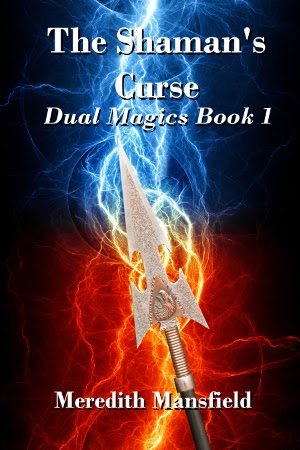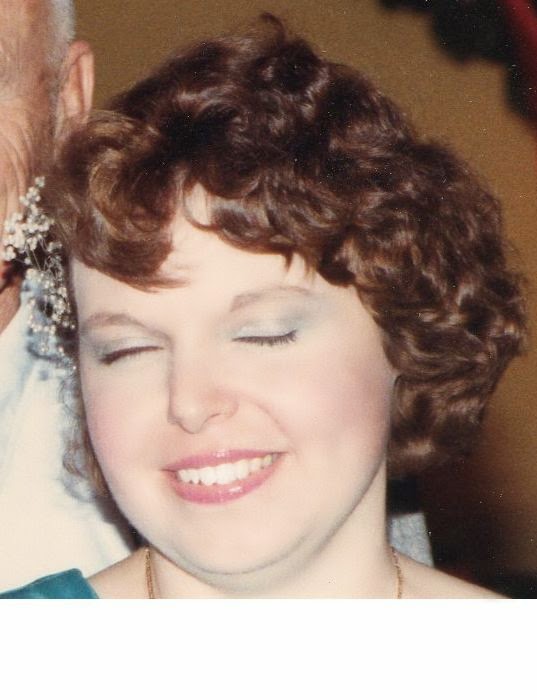To post this Grand Finale (we’ll send you the HTML code) and add your Social Media to the Rafflecopter,
email us at PrismBookTours(at)gmail.com with “SciFi GF” in the subject line.
Are you interested in reading about futuristic societies where there are aliens and space travel, technological advancement, robots and utopias? If so, then check out the books that were featured on this
Sci-Fi Tour!
We’re often convinced if we just get this, whatever this is, our suffering will end. Yet with all of today’s advancements, why does utopia still seem to be something achievable only after death while dystopia our human inheritance?
Can technology change this?
Suppose that medical bioengineers invent a synthetic stem cell, a biomite, that can replace any cell in your body…
 Halfskin
Halfskin(Halfskin #1)
276 Pages
Biomites are artificial stem cells that can replace any cell in your body. No more kidney failure, no severed spines or blood disease. No cancer. Pharmaceuticals become obsolete. With each dose of biomites, we become stronger, we become smarter and prettier.
We become better.
At what point are we no longer human?
 Clay
Clay
(Halfskin #2)
278 Pages
This psychological thriller will keep them second-guessing every move while they elude Marcus Anderson and the governing agency that seeks to rid the world of biomites. But in the end, they’ll all discover just how deep the betrayal goes.
 Tony Bertauski:
Tony Bertauski: During the day, I’m a horticulturist. While I’ve spent much of my career designing landscapes or diagnosing dying plants, I’ve always been a storyteller. My writing career began with magazine columns, landscape design textbooks, and a gardening column at the Post and Courier (Charleston, SC). However, I’ve always fancied fiction.
And I’m a big fan of plot twists.
**Excerpt**
Prologue
In need of Glory
Frustrated and embarrassed by its struggle to defeat the Tikal rebels, the United States Space Force dumped its resources into the development and construction of a new class of warship. After nine years of research and development, trial and error, the final product was beyond impressive. Integrating the bleeding-edge of current technologies and completely inventing new ones, the new warship was an absolute marvel. The ship was a perfect harmony of the highest levels of speed, agility, weaponry and defensive capabilities. The awe-inspiring warship was leaps ahead of everything else in the known universe…
 The Glory
The GloryThe Glory and it is a fun, funny, exciting, character-driven sci-fi book that follows Adam Whitlock in his journey to join the United States Space Force in hopes of becoming captain of The Glory, the best ship in the fleet. Meanwhile, brewing tensions between the humans and a group of alien races is on the verge of becoming a full-scale war.
Amazon

Founder of Fictitious Fox Publishing, author of The Glory and owner of a sweet head of hair,
Mister JMI is a longtime lover of the art of storytelling.
At the age of 12, Mister JMI knew he wanted to become a writer. Unfortunately, his dream was delayed for over a decade to suffering from a severe case of chronic procrastination. Now fully recovered, Mister JMI is ready to unleash a deluge of exciting, funny and fantastic stories for your entertainment.
So sit back, relax and enjoy.
Would you like a receive a copy of The Glory? Send an email request to this email.

How to Research A Sci-Fi Novel
(if You Know Nothing About Robots)
I did a ridiculous amount of research for my second novel, Parched. So much so that when compiling it all for this guest blog post for the Prism book tour, I found myself wondering 1. I am crazy and 2. If knowing it was going to take as much time as it did, if I’d do it all again. (Answers are ‘yes’ and ‘yes’).
My jumping off point for Parched was this: a girl in love with a robot. What did I know about robots? Well, I’d seen Bladerunner a few dozen times…
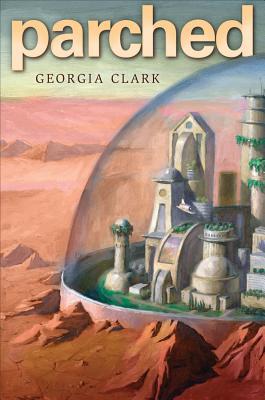 Parched
ParchedRobots, renewable resources, and romance get tangled together in this thrilling futuristic adventure novel about a utopian city struggling to keep its peace.
“Bold futurist adventure with unusual romance, riveting action and ominous ecological red flags.” —Kirkus Reviews

Georgia Clark is an Australian writer and performer based in Brooklyn. She is the author of the young adult novels SHE’S WITH THE BAND (Allen & Unwin) and sci-fi/romance PARCHED (Holiday House). Widely published online and in print. Won some awards/grants/residencies. Has a play on at the NY Fringe festival. Pretty keen on cheese plates.
Tour-Wide Giveaway
$15 Amazon Gift Card (INT)
Ebooks of Halfskin and Clay (INT)
Signed copy of Parched (US Only)
Ends September 14th
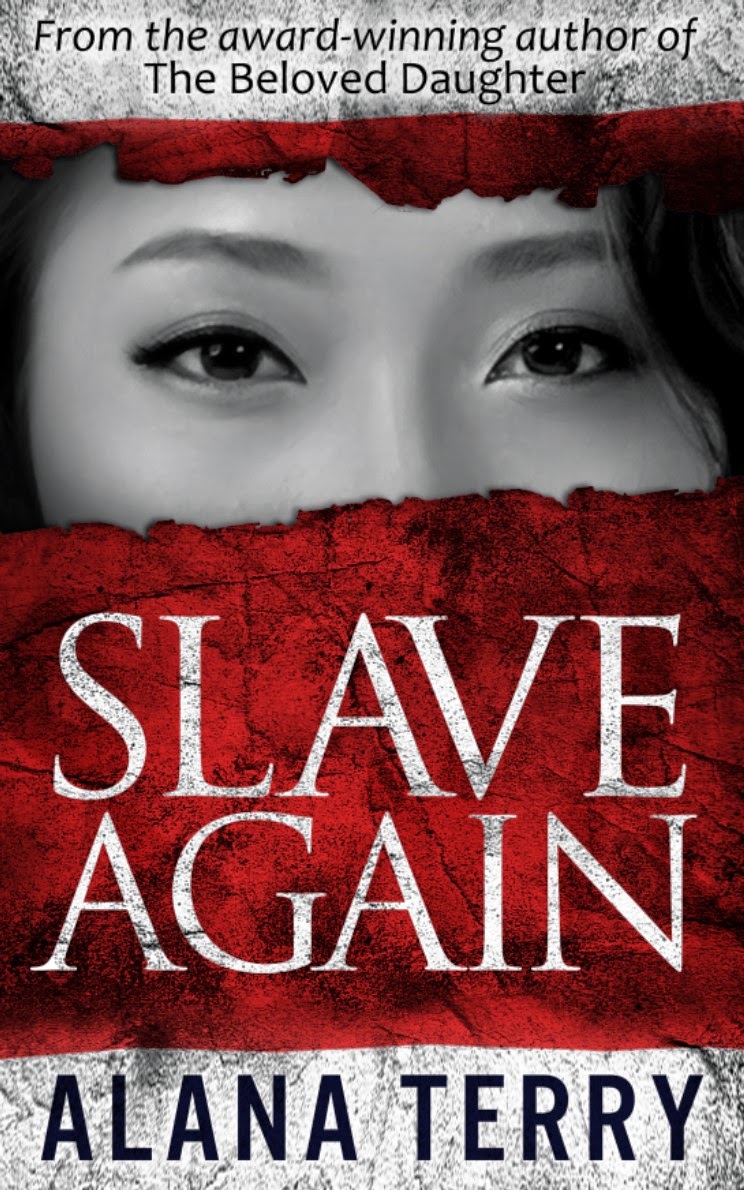 |
| Special Discount ~ Limited Time Only |
Special Time-Sensitive Giveaway! The first 25 readers who enter the giveaway below will receive a free audiobook from award-winning author Alana Terry. She’s also giving away a $100 amazon card, a hundred free audio downloads, and a free ebook to anyone who signs up!
About Slave Again: After escaping a North Korean prison camp, Mee-Kyong is hustled over the border and sold into the Chinese underworld. She vows to survive, but sheer determination and willpower won’t save her this time. Is she fated to remain a slave forever?
Slave Again is a Christian suspense novel from award-winning author Alana Terry, whose debut novel, The Beloved Daughter, won awards from Women of Faith, Grace Awards, The Book Club Network, and Readers’ Favorite.
NEW BOOK RELEASE: Slave Again by Alana Terry is hot off the press, and both the ebook and paperback are at a steep (30-60%) discount!! Prices will go up soon, so grab your copy today.
Slave Again book trailer (contains one mildly violent image)
About the Author: Alana is passionate about human-rights issues in North Korea and has devoted her writing to raise both awareness and funds to help North Korean refugees find freedom and safety. You can learn more about her work with Liberty in North Korea at alanaterry.com/link.
Check out Slave Again now before the price goes up, and don’t forget to enter the giveaway!
a Rafflecopter giveaway
Welcome to Realm Explorers! In this weekly series, we visit a variety of unique worlds created by talented science fiction and fantasy authors. Enjoy your travels! And don’t forget to read to the bottom of the post to find out more about each author and see how to purchase the featured book.
Author’s name: David G. Johnson
Title of book and/or series: Chadash Chronicles: Book 1-Fool’s Errand, Book 2-Mystic’s Mayhem, Book 3 (out late 2014)-Paryn’s Gold, and the prequel short story Saga of the Everking
Brief summary of the story:
On the far side of the universe God has created a new world, the world of Chadash, where two groups of angels battle for the souls of men. Chadash is a world filled with magnificent beings, ancient races, epic heroes, and evil forces seeking to conquer or destroy. An unlikely band of heroes, a teenage thief, a holy warrior, a barbarian prince, a priest, a half-feline huntress, and an outcast necromancer, are drawn together for what was to be a simple job, but soon transforms into a much greater adventure. Come along to the world of Chadash, where heroes strive and battle as unwitting pawns in an even greater struggle.
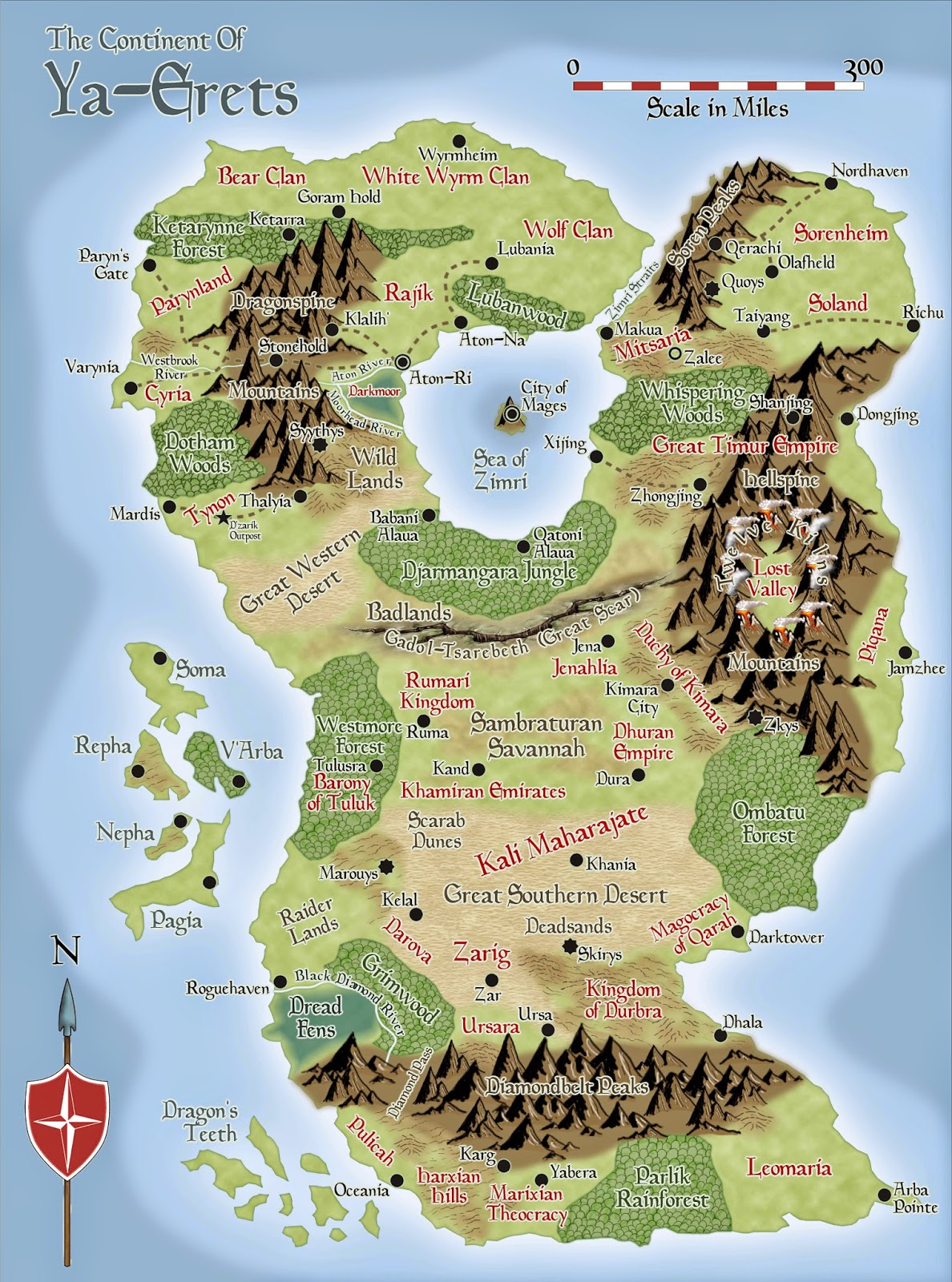 Brief description of the world or location you created for this story:
Brief description of the world or location you created for this story: Chadash is a roughly earth-like planet, but is filled with many sentient races.
It is a vast land of dangerous creatures, hostile enemies, and exotic landscapes which will capture the imagination of readers and give them a wondrous new world to explore along with the heroes.
If we were to visit Chadash as tourists, what would you recommend that we see or do there? Well, Chadash is a vast and varied land, so that question would be a bit like asking what a visit to North America would be like.
Canada is very different from Mexico.
Maine is vastly different from California.
So for the rest of the discussion, let’s focus on the northwest region of the continent of Ya-Erets, where most of the action from the first three books takes place. It is a more civilized and relatively homogenous area of Chadash.
The first of the many must-see highlights for northwest Ya-Erets would be the independent city-state of Aton-Ri. It is truly a melting pot, where races serving the angels serving the One Lord, the Malakim, mix and mingle with the races serving the rebellious and evil angels, the Ayabim. The only rules for residence in Aton-Ri is a willingness to live in peace, and an agreement to fight in defense of the city if needed. No matter how different one is, they can find a home in Aton-Ri.
A second don’t-miss place would be the amazing stone spires of the Durgak city of Stonehold. The Durgak are master miners and stone carvers as well as the most accomplished armorers on Chadash. Visiting the epic and vast halls carved from the very Dragonspine Mountains themselves is a sight to awe the most stoic visitor.
A third place would be the paragon of civilization in the northwest, the crown jewel of Parynland, the city of Paryn’s Gate. Epic architecture with nature themes run through the city, as though the Ketarynne Forest to the north had extended its essence into Paryn’s Gate to infuse the city. Spotting Ketarynne’s main inhabitants, the reclusive and elegant V’rassi, is easy to do in Paryn’s Gate, as most of the Parynlanders have at least a trace of V’rassi blood in their family lines.
Finally, one of the most exotic cities to visit is the tent city of Klalih’, the capital of the nation of Rajik. The city has very few permanent structures, but is built by the nomadic Rajiki horsemen as a vast sea of colored tents. Vendors from all the tribes gather in the winding and ever-shifting market streets of the nomadic city, and sights, sounds, smells and tastes to delight any visitor can be found here.
What dangers should we avoid in northwest Ya-Erets?
One of the heroes, Melizar, who has traveled much further than any of the others, refers to the northwest as “a cradle of civility and peace, compared to the rest of the world.” Still, it is not without its dangers. There are the “death grass” adders that inhabit the plains of the northwest, and their bite can kill a full-sized horse with a single bite. The Wild Lands to the south of Darkmoor are filled with Goblinoid tribes and it is an area best avoided if at all possible. Finally, if enjoying the hospitality of the cosmopolitan city of Aton-Ri, the southwest part of the city, especially around the neighborhood known as The Barrows, is best to avoid after dark. Although, if one is an adventurer seeking information, The Iron Cur Tavern, or “Mok’s Place” as the locals call it, sits on the edge of The Barrows and is the place to go in Aton-Ri.
Is there a distinct or unusual type of food or meal that we might be served in northwest Ya-Erets?
Ah, yes! There is one delicacy that is craved by adventurers and travelers with purses heavy enough to afford it. yochamabread is a specialty made by the Moors of Darkmoor. Being a swamp, food spoils very quickly in Darkmoor and bread cannot be kept for more than a day without going moldy. So the Moors have developed a baking technique using resin from the Yocha tree which grows everywhere in Darkmoor. They oven-seal the bread by baking it in the resin, and as long as the hard, resin shell remains intact, the bread will be just like it was fresh-baked for up to two or three weeks! Eating well on the road is difficult, but for those who can afford it, yochamabread can make the difference between eating and dining on the road.
What types of weaponry or fighting styles are common in northwest Ya-Erets?
Well, in earth terms it is a society just on the brink of the gunpowder age. There is one nation of inventors in eastern Ya-Erets, the Duchy of Kimara, whose technological advancements are starting to make their way into other nations. Powder weapons are not uncommon, but they do show up very occasionally in the hands of travelers. Much more common are typical swords, maces, clubs, spears, bows and arrows, crossbows, etc. There are some advanced fighting styles, as various schools of martial monks are known in a few societies. The monks can be very dangerous fighters, but they are not undefeatable and often have their own weaknesses or idiosyncrasies which can be exploited. This, added to the fact that the monks are very few in number compared to the overall population of Ya-Erets, helps keep them from becoming too overwhelming a force. Additionally the often competing philosophies of the different schools mean that opposing monk schools often also serve to keep each other in check.
What types of vehicles, animals, technology, etc. are used to travel in or to northwest Ya-Erets?
Again, barring Kimara, which is said to have invented steam powered vehicles, horses and wagons are the normal mode of travel. Some races are very fleet of foot and prefer to run rather than ride. This is seen in the story in the person of Arreya, a half-Zafirr (feline humanoids) huntress and one of the heroes of the first three books. Other races, which aren’t encountered in the first three stories, have wings and can fly. This includes the Ouati, bird-like humanoids, the Zza-zree, bee-like insectoids, and some of the Great Wyrms, like dragons of old. But of course Wyrms have been extinct since CY666, everybody knows that, right? But there are rumors…
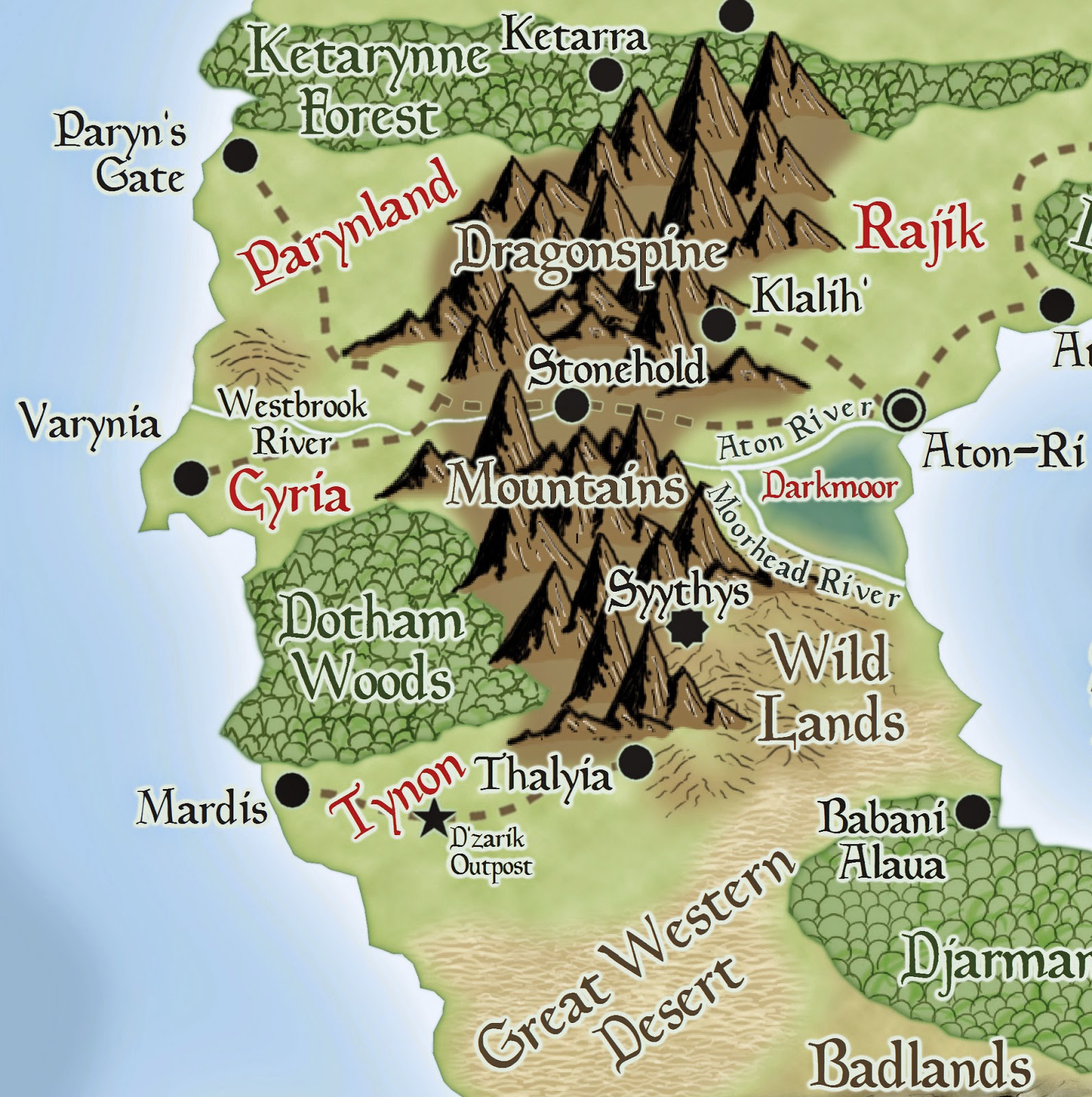
What types of plants, animals, or sentient races might we encounter in northwest Ya-Erets that we don’t see on earth?
Chadash is filled with other races, because of the manner and purpose for which it was created. There are so many, but other than the ones I have already mentioned in other answers, and only limiting to the races common to northwest Ya-Erets, there are still quite a few. Goblinoids include races like Orcs, Hobgoblins, and Ogres, and are quite common in the Wild Lands and the Dragonspine Mountains. Giants, called Nephilim, also are found fairly commonly in the Dragonspines. The more dangerous forest of Dotham Woods is home to reptiloids and their ilk, as well as many insectoid races. I have already mentioned the Durgak (think fantasy dwarves) of Stonehold City and the V’rassi (think fantasy elves) of Ketarynne Forest, but there are also the human race of Adami, which are very similar to the humans of earth. The Qarahni, another human race, are large, hearty barbarians who inhabit the Clan Lands of the north. Goldain, one of the main heroes in the story, is a prince of the Wolf Clan Qarahni. Mitsar, or halflings, are also often seen in and about Aton-Ri, although their main homeland is actually in northeast Ya-Erets. Wolf-like humanoids called Fenriri, and their half-human offspring the Fenratu, are very common in the northwest, especially given a large population of them reside in eastern Ketarynne and Lubanwood. That covers most of the races that appear in the first three books, but as Melizar rightly said, there is a vast and wondrous world out there, and other parts of Ya-Erets, which the heroes will visit in future stories, contain many more wondrous races.
What role, if any, does magic or the supernatural play in the lives of people in northwest Ya-Erets? If there is magic, please give some examples of what it involves or how it’s used.
The “magic” in all of Chadash is no different than on earth. What? Yes, there is “magic” on earth. We see it throughout the Scriptures. Like in the Bible, there are three kinds of supernatural powers that manifest on Chadash.
“Oth” powers are like the miracles of the Bible. They are given only by God, called the One Lord on Chadash, and are at His discretion. They can be one-time occurrences in answer to a specific prayer for help, or can be gifted longer term.
“Kashaph” are the second type, and this is like the dark powers of sorcery condemned in the Bible. Such things come from the fallen angels, the Ayabim, and include the dark powers of necromancy, conjuration, and even divination. There is often conflict within the heroes when Melizar, a necromancer, uses his kashaph powers around the characters who are followers of the One Lord. It is truly a test of patience, but also a good lesson in how we can deal with people in the real world who think, act, and behave in ways very different to us. We can choose to condemn or to teach. Too often in the real world, Christians choose the former, but fortunately, the wise and patient leader of the heroes, the holy warrior Gideon, chooses the latter.
“Koach” are the final type of powers, and they are the most mysterious of all. The are not studied like the kashaph powers, or specifically asked for like the oth gifts, but are granted totally at the discretion of the One Lord for His purposes. Some races seems to have certain koach powers, like the Solana’s control of light, or the Piqa manifestation of electricity. Others, like bard song koach or some of the human monks’ ability to manifest elemental powers, are not tied to racial attributes. Then there are the Qatoni, Mitsar with koach gifts, many of whom are nature priests called druids. They believe in the One Lord as the creator of nature, but do not have the formalized religion of the typical One Lord priests.
Is there any advanced or unusual technology in northwest Ya-Erets? If you haven’t described it already, please give some examples.
Not really. Thatcher, one of the heroes, has a knack for inventing and loves coming up with various gadgets and gizmos. Most of what could be called “technology”, however, would be found in Kimara. There may be a visit to Kimara in later books, but it is not part of the northwest and not really featured in the first three books.
Are the days of the week and months of the year the same on Chadash as on earth? What holidays or special events are celebrated regularly there?
It is very close. There is still a seven day week, but each month on Chadash is 28 days long, so exactly four weeks. There are thirteen months in the year, thus making Chadash’s year one day shorter than ours, i.e. 364 days. There is no leap year on Chadash. The one holiday which plays prominently in the stories is Rest Day, which is the seventh day of every week. It is observed very closely to the way the Sabbath would have been observed in Scripture, but not universally. Most races and nations have wandered far from the teachings of the One Lord, but the V’rassi follow closely the tenets of the Old Testament observances, living quite closely a picture of what Messianic believers would live in today’s world on earth. The Parynlanders, mostly at least partially descended from the V’rassi, tend to hold closer to the observances as well, and Paryn’s Gate is the one city in northwest Ya-Erets that still keeps the tradition of Rest Day.
Is there a particular religion practiced in northwest Ya-Erets? Please describe what it involves.
There are both many, and none. Some societies follow very closely the worship of the One Lord. This is especially true of the servant races of the Malakim, or the angels who serve the One Lord. These servant races are not completely free-willed, but their half-human offspring, should they breed with one of the human races (i.e. Qarahni, Adami, Mitsar, Raphaim, Arba-Zeroa) are. The humans, and half-bloods, being free-willed, often choose their own path. Some do worship the One Lord, while others have chosen to worship the fallen angels, the Ayabim, or some other false gods of Ayabim invention. Many have a general awareness of spirituality on some level, but have no true belief or worship. In many ways, Chadash isn’t that different from earth, is it?
What is the political or government structure in northwest Ya-Erets? Who is in charge there at the moment, and what kind of leader is he/she?
Being a bastion of civilization on the continent, the northwest is a collection of cooperating nations who rule individually in their own area, but who govern the region collectively through the efforts of the Northwest Diplomatic Council, or NDC. The NDC member nations are the independent city-state of Aton-Ri, Rajik, Darkmoor, Parynland, and Cyria. These are human-led nations for the most part. Stonehold hosts the NDC and if necessary the Durgak agree to serve as mediators for disputes, given their neutrality to the external politics of the other nations. It seems to work well for the most part, and the NDC has managed to be the chosen way to settle international disputes for nearly three decades. The NDC was formed after the end of the Parynland-Cyria war.
Has anything in your actual life inspired the locations, cultures, etc. in your book?
Yes, actually. I live internationally now, and have been a minister and visitor to many nations in North America, Europe, Africa and Asia during my lifetime. I love the vastly different cultures, customs, foods, etc I have encountered in my travels, so in my books I felt it was important to create a deep and realistic world where readers could travel with the heroes and get to experience some of the wonders of different places and different people. Also I have a master’s degree in Biblical Languages, so I really enjoyed incorporating Hebrew into the V’rassi culture as their racial language. It gives an ancient feel to Chadash, and a three-dimensional aspect to some of the terms that have crept into other languages and cultures throughout Ya-Erets. That love of history, and fascination with how current events have developed from historical ones, is a key factor in my worldbuilding, so when readers get my books, they get a world that feels real despite the wildly fantastical elements I incorporate. Readers of epic fantasy should get an epic world. If I fail to do that, I feel I have short-changed my readers.
What, if any, “hot-button” or controversial topics do you touch on in your book?
Well, the faith element in my book is present, but not smothering. It occurs naturally within the story and characters. Some will dislike the book because it is written from a Christian worldview, regardless of how skillfully or subtly the faith elements are presented. Other unbelievers have said in reviews, they appreciated that I was up front in the Foreword that it was written from a Christian worldview, but that engaging with the faith elements was not necessary in order to enjoy the story.
I also have gotten a little flak for presenting the idea of repentant angels. I understand human tradition doesn’t like that idea, but I, and a group of biblical scholars who I engaged to beta read for me, went through Scripture and could not discover anywhere that the idea is specifically excluded. We know there are some angels, specifically named at the judgment, who will not repent. I respected the biblical account there by leaving all those named angels still on earth with Lucifer to play out the Bible’s timeline as written. But there are many, many more angels than are specifically named in Scripture, and there is no Scripture which specifically says that there could not be some repentant angels. Speculative fiction is all about asking the “what if” question, so that is what I did as part of the backstory and setup for the world of Chadash. I know some believers won’t like that, but honestly, I open the door, if someone can prove to me from Scripture that anything I have written is outside the “gray area” or is specifically precluded by what the Bible says, I will pull my books from the shelves right away. I have no desire to countermand God’s word, but I also have chosen to write within the boundaries of freedom of the letter of God’s word and not to be deterred by the tradition of men.

Author autobiography:
I worked for many years as a senior manager for various Information Technology companies. Late in life, I came to faith in Christ, and that turned my life in a whole new direction. I knew from day one that I intended to serve him, but had no idea what that meant. The wonderful pastor who led me to Christ encouraged me to enroll in Seminary, so I came to Christ in August and was in Seminary by the following May. Years later I have completed my MDiv in Biblical Languages with a concentration in International Church Planting, and we currently live in Asia serving as living witnesses to our faith. Writing is another love I have had for my whole life, especially of Fantasy and Science-Fiction, and God has given me a way to expand my ministry with the gift of writing.
Where, and in what formats, can we purchase your books? The books can be found on Amazon. For those wishing to save 99 cents, you can actually get a free copy of the short-story teaser/intro to Chadash, Saga of the Everking, from Smashwords or B&N.com for the Nook.
If you are a kindle reader, you can get the mobi file from Smashwords or just get it for 99 cents on Amazon directly.
Saga of the Everking (free edition on Smashwords)
I would truly love to connect with any readers who might have questions, comments, or encouragement for the Chadash Chronicles series.
I have a special email I have set up for correspondence related specifically to my writing or the Chadash Chronicles series as well.
That email is
[email protected] Welcome to Realm Explorers! In this weekly series, we visit a variety of unique worlds created by talented science fiction and fantasy authors. Enjoy your travels! And don’t forget to read to the bottom of the post to find out more about each author and see how to purchase the featured book.
Author’s name: Meredith Mansfield
Title of book and/or series: The Shaman’s Curse, Book 1 of the Dual Magics series
Brief summary of the story:
Vatar risked his life to try to save his friend–and failed. Now he has an implacable enemy in the vengeful shaman, who blames Vatar for the death of his only son. In his isolation, Vatar finds some comfort in daydreams. He knows the strange girl he sometimes imagines is just that–a dream. She’d better be.
Because, if she’s real things could get even worse for Vatar. The accepted magic of Vatar’s plains tribe wouldn’t enable him to see or communicate with a girl he doesn’t even know–or know where to find. That would be more like the magic passed down in certain, closely-guarded bloodlines among the ruling class of the coastal cities. And that’s bad. Very bad.
Unlike their own, Vatar’s people think the city magic is evil. If the shaman ever found out, it could be the weapon he needs to destroy Vatar. And yet, finding a way to accept the other side of his heritage may be the only way Vatar can ultimately defeat his enemy.
The two kinds of magic have always been totally separate. Until now.
Brief description of the world or location you created for this story:
Unfortunately, I haven’t given this world as whole a name, so let’s refer to it as The World of the Dual Magics. The peoples in it generally only know their own little corner of it (a coastal city, the central plains, or a hidden mountain valley). A few may have traveled to another location, but they don’t tend to think of the world as a whole. Yet. I plan to work on a map (other than my pathetic hand-drawn one) for the publication of the second book in the series, The Ignored Prophecy (this December).
Basically, the cities are scattered along the western coastline or accessible by river. These cities are all ruled by the Fasallon, though the bulk of the population is not Fasallon. Caere is the only one of those cities that comes into the first book in the series. Inland from the coast is a broad, trackless plain where the semi-nomadic Dardani live and tend their herds of horses and cattle. East of that is a huge, mostly uninhabited forest, backing up onto high, impassable mountains. In a valley beyond the mountains, if you can find the single pass that crosses them, there’s another civilization that is both eerily like and in some ways very different from that of the Fasallon.
If we were to visit the World of the Dual Magics as tourists, what would you recommend that we see or do there?
Tourist attractions would be thin on the plains. If you were to visit the coastal city of Caere, though, you’d be well advised to be there in the summer, for the Festival, when the Sea Gods (or at least, what the Caerean think are their Sea Gods) parade through the streets.
What dangers should we avoid in the World of the Dual Magics?
Caere is pretty tame and well-patrolled. Dragons haven’t been seen in about 600 years. Unless, of course, you have Fasallon magic and aren’t already part of their system. Then you’d better keep your head down.
It wouldn’t be a good idea to try to cross the plains without an experienced Dardani guide. It’s not just the usual dangers–thunderstorms, lions, bears, and wolves. Without knowledge of a route that will take you to a waterhole at least a couple of times a day, it’s too easy to get lost and die out there. And you run the risk of Themyri raiders if you try to follow the river.
What types of weaponry or fighting styles are common in the World of the Dual Magics?
Vatar and the Dardani wear long knives, often of Caerean steel. They also use the bow for hunting. However, Vatar is a terrible shot with the bow, so he mostly concentrates on the spear, by preference a long horseman’s lance. Apart from steel or iron implements traded for in Caere, the Dardani are a bronze-age people.
In Caere, only the Guard would carry weapons at all, often a short thrusting sword.
What types of vehicles, animals, technology, etc. are used to travel in or to the World of the Dual Magics?
Most travel over any distance is done either on horseback or by ship. It’s death to try to walk across the plains. Wagons would only be useful within the cities or their immediate environs. Otherwise, there aren’t roads suitable for wagons.
What types of plants, animals, or sentient races might we encounter in the World of the Dual Magics that we don’t see on Earth?
The only sentient beings are people. No elves or dwarves, etc.
However, there are a few unusual creatures. Most notable is the forest tiger, which is rather like a saber-toothed tiger, but with rhinoceros-like armor. Very dangerous and very hard to kill.
Otherwise, one might see wyverns in the mountains. On the plains, there’s a wild horse that has spots like a leopard, almost impossible to see at any distance and impossible to catch. And in the forest, there’s a funny little flying-squirrel-like creature with a mane like a lion.
What role, if any, does magic or the supernatural play in the lives of people there? If there is magic, please give some examples of what it involves or how it’s used
As the series title suggests, there are two kinds of magic in this world.
One is acquired by initiation into one of the clans of the plains people, the Dardani. It’s a kind of spiritual connection to the clan totem spirit. For example, Vatar is Lion Clan, which means that he can sense when lions are present and get a general sense of their mood. His friends can do similar things with the wild horses, eagles, or ravens. The shaman can do more, but any Dardani can do that much. However, the Dardani do not consider this magic and would take offense if you called it that.
In the coastal cities, the Fasallon closely guard a different kind of magic that is inherited from one’s parents. Almost every Fasallon can use Far Speech (we’d call it telepathy) and Far Sight (the ability to see something or someone with far away, especially if there’s some sort of connection). Other, more-valued Talents include Fore Sight (prophecy), certain rare healing abilities, and most valuable of all, transformations–the ability to make oneself or something else to appear to be something or someone else. The most Talented can actually change themselves into something else. This ability is key to their rule in Caere and the other cities.
Things get really interesting when the two kinds of magic combine. There’s a hint of that in The Shaman’s Curse, but it will really become important in the second book of the series, The Ignored Prophecy, which will be published in December.
Tell us about any sports, games, or activities that are available for entertainment in the World of the Dual Magics.
The Dardani play a game like a cross between basketball and polo. It’s played on horseback, on a triangular field, with three teams of five riders each. It’s the highlight of their midsummer celebration. Having three teams makes the game as much about shifting alliances as about the skill of the players.
Are the days of the week and months of the year the same as on Earth? What holidays or special events are celebrated regularly there?
The Dardani separate their year into six segments, one named for each of the clans. The lunar cycles within those segments are referred to as First and Second, as in First Wolf or Second Lion. The cycle starts in mid-winter with Wolf, followed by Bear and Horse. Midsummer separates Horse from Eagle, which is followed by Lion and finally Raven. It is considered propitious to be born in the season of your Clan totem. Second best would be within the season of one of the allied clans (Horse/Lion/Eagle vs. Raven/Wolf/Bear). Vatar was born during Second Wolf, an ill-favored season for a member of the Lion Clan.
Is there a particular religion practiced in the World of the Dual Magics? Please describe what it involves.
Among the Dardani, religion revolves around each clan’s totem Spirits. They don’t consider their connection to these Spirits to be magic and they have a strong superstitious dread of what they do call magic.
Historically, the Caereans worship Sea Gods. However, the Fasallon have essentially hijacked this religion, impersonating the Sea Gods to bolster their unquestioned rule in the coastal cities.
What is the political or government structure? Who is in charge there at the moment, and what kind of leader is he/she?
Caere is ruled by the Fasallon High Council, made up of the most magically Talented representative of each bloodline. Smaller, day-to-day issues that don’t merit the attention of the High Council or their bureaucracy would be handled by the various guilds.
The Dardani aren’t so much ruled as led by their chiefs. Each clan may have several chiefs, chosen by popular acclaim for a life lived with honor. Either men or women may be selected as chiefs. There is usually a good representation across age ranges among the male chiefs. Women chiefs are more likely to be older widows. This is a practical consideration. Younger married women are usually to be found living with their husband’s clan. The chiefs work mainly by trying to create consensus within their clan or, together, within the tribe.
Are there any other unique cultural practices that we should be aware of if we visit?
If you should go out to visit the Dardani during their summer gathering of the clans at the Zeda waterhole, don’t go for a walk around the waterhole with a Dardani. Especially don’t accept any gifts offered on such a walk–unless you mean it. These are courtship rituals. You might find yourself married and living in a sod hut before you knew it.
Has anything in your actual life inspired the locations, cultures, etc. in your book?
Well, I seem to be incapable of putting the ocean anywhere but on the west. (West-coast girl, here.) Specific locations may borrow somewhat from places I’ve visited. For example, Caere’s climate is a little like San Francisco’s.
Author Autobiography:
Professionally, I’ve been a financial analyst and a visual basic programmer. I also have a paralegal certificate, although I’ve never worked in that field. It’s anybody’s guess what I’ll be when I grow up.
Imagining stories and writing have always been an important part of my life. It’s one I’ve finally could get serious about while I cared for my mother who had Alzheimer’s disease.
Where, and in what formats, can we purchase your book?
The print book is available on
Amazonand other sites.
Where can readers connect with you online?
My
blogis probably the best place to find me.
My twitter handle is @MansfieldMJ (But I’m hardly ever there.)
I hope you all enjoyed the trip to the World of the Dual Magics. Questions about the world or the book? Ask them in the comments and the author will get back to you!
Click here to read other posts in the Realm Explorers series.
Please join us again next Monday for a trip to the fantasy world of Chadash in Realm Explorers Part XIII!
 Tony Bertauski: During the day, I’m a horticulturist. While I’ve spent much of my career designing landscapes or diagnosing dying plants, I’ve always been a storyteller. My writing career began with magazine columns, landscape design textbooks, and a gardening column at the Post and Courier (Charleston, SC). However, I’ve always fancied fiction.
Tony Bertauski: During the day, I’m a horticulturist. While I’ve spent much of my career designing landscapes or diagnosing dying plants, I’ve always been a storyteller. My writing career began with magazine columns, landscape design textbooks, and a gardening column at the Post and Courier (Charleston, SC). However, I’ve always fancied fiction.

 Brief description of the world or location you created for this story:
Brief description of the world or location you created for this story: 









